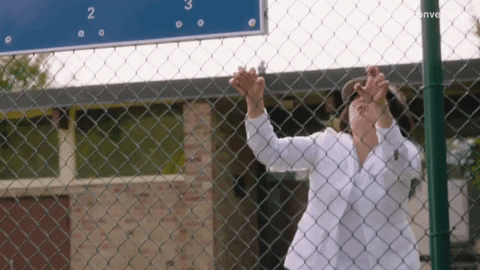🪧 Secondary market updates, IPO signals, and other signs we’re paying attention to
Glad to be back for another week. Last time I ranted a bit on the AI craze and if it’s just another hype bubble, or if it’s a sign that we’re back to business as usual in startup land (Hint: likely a bit of both).
So, I thought I’d follow up with some more data points, including an update from our friends at Zanbato about what they’ve been seeing on their trading venue. And what it all means for potential liquidity for your equity (aka, when you can finally cash it out).
🌲 We’re not out of the woods yet…but the trees are falling in the right places
Yes. Rumors about IPOs are getting stronger (looking at you Klaviyo, Turo, Egnyte, Databricks, and Instacart). And, yes we had one tech-adjacent stock that performed pretty well: Oddity.
If you follow “Founders + Funders,” you may have read a past issue from my colleague John Morrison about what it’ll take for IPOs to return with some insights from Gregor Feige, Co-Head of Technology and Communications Equity Capital Markets at Citi.

The most obvious: Investors need to make money. With the market now back in bull territory, the stage is seemingly set. And Oddity, a consumer tech platform for beauty brands, decided to make its debut. Again, they did pretty well! We’ll see where things go, but for now it’s a good sign for other companies, especially those in tech looking to go public as they watch others test the waters.
But another major sign John and Gregor pointed out was price alignment. According to WSJ, investors seemed to be jumping over themselves to be a part of Oddity’s public debut. And it actually caused Oddity to increase their debut price due to all the pent up demand. So, the IPO drought, it seems, is not due to a lack of investor demand (at least not anymore).
Yes, Oddity did increase their IPO debut price. But there are still many startups out there living off valuations that they, nor the public markets, can support. Feige touched on the expectations of companies, and their founders, and public investors. We’re no longer living in 2021 when the pandemic inflated the valuations of many — admittedly strong! — startups while the money flowed.

John noted it would be a painful fall, which many founders would seek to avoid at nearly all costs. Well, it seems that pain is finally meeting reality as a “‘Tidal Wave’ of Down Rounds Hits Startups.” To put it bluntly: many have no choice as the cash runs dry. Some are, unfortunately, going bankrupt while others, like Hopin (once valued at $7.7 billion), may be forced into unfavorable M&A deals.
It may be what’s needed to get us back to a healthy path, but it’s going to be a bumpy ride. It’s possible that very good news, like a couple major tech IPOs, are mentioned alongside some bad news, like others going out of business. So buckle up because while we’re seeing a lot of the signs we want to see, they won’t all be painless.
🪧 Secondary market activity can also provide some key signs
OK, so what are the secondary markets telling us? I asked Akrati Johari, Chief Growth Officer at Zanbato about what they’re seeing on their trading venue and what she expects further into the future:
Let’s start with what she and her team expect to see over the next year:
“We are expecting activity to pick up going into the second half of the year. Many companies have not done primary financings in the last 12-18 months who will be looking to raise financing to fund growth. Usually, that results in increasing activity in the secondary markets on the back of a primary raise.”
That certainly aligns with some things we’ve been hearing, and could be a good sign for those of you looking for liquidity at well-positioned companies.

She updated us a little while back that they were seeing signs of the market settling a bit, though things were still on the volatile ends of the spectrum.
So what about now?“We are closely monitoring the total amount of buy interest on the platform which has been increasing over the last few months. Currently, we see 44% bid interest on the platform, up from an average of 36% over the last 12 months. We also monitor the bid-ask spreads, this is the difference between the price a buyer is willing to pay and a seller is willing to sell at. Bid-ask spreads for the top 50 companies on ZX narrowed to 6% in July down from 8% in the previous month. We are also seeing activity across a lot more names vs. 6 months ago. All of these trends are generally pointing towards expected increased activity in the secondary markets going into September and Q4 of this year.”
I agree with Akrati here, and this aligns with some of what we’re seeing in the markets — that prices sellers want to sell for and those buyers are willing to pay for are starting to come together, though gaps remain.
And the fact that there’s an increase in activity is a sign that many are seeing a light at the end of the tunnel (aka, an IPO). Again, we may never go back to the way things were in 2021, but the markets are starting to accept (or, at least settling for) this new level of “normalcy” rather than waiting for the way things used to be.
I also asked Akrati what Zanbato expects for the future, hopefully when this pandemic and post-pandemic era are well behind us.
“Our expectation is that volumes in the secondary markets will continue to increase over the next 5 years as companies continue to stay private for longer. We also expect as a result of this, there will be increasing need for liquidity for employees and investors to sell their shares prior to a liquidity event. At Zanbato, we are focused on improving price discovery and transparency in these markets and with that we expect to increase liquidity in the secondary markets.”
As we’ve seen during this dry spell, employee liquidity has become a major issue. I hope it doesn’t continue to be but the hope is that employees also have access to liquidity, even if it isn’t via an IPO.
💰 So, what does this all mean for you and potential liquidity?
A few weeks ago, I gave a crash course in secondaries. With the IPO drought, lots of people have been looking for cash. So if IPOs do come back sooner or later (fingers crossed!) is it best to just wait?

Well, Chris Arnold, Secfi Wealth’s Lead Financial Advisor, weighed in on this recently but I asked him for other reasons why a secondary could make sense, even if you think your company is on their way to go public:
- Accelerate your financial goals: “Life doesn’t need to be put on hold, even though your company has put their IPO on hold.”
- Generate cash to cover your tax liability: If you’ve already exercised options or sold other investments at a gain, you may have taxes due. Selling enough today to cover your tax liability allows you to avoid taking on debt, being on a payment plan with the IRS, and ultimately allows you to sleep easier knowing your taxes are covered.
- “Disqualifying disposition” to lower your tax liability: Many companies have lowered their 409A valuation this year. If you exercised stock options earlier this year while your companies 409a was higher than it is today, selling shares in a secondary sale before year-end would wipe out any AMT liability (though you would pay income taxes on the sale price minus your strike price)
- Lower your concentration risk to your company: I have partnered with a lot of startup employees whose company equity makes up 80% or more of their entire net worth — that is HUGE exposure to one single investment. How would you feel if your company’s IPO is a bust? What if next year comes & goes and your company is still private? Startup equity can be an incredible wealth creator, it also can expose you to life-altering financial risks if things don’t transpire as you expect. Taking 10-15% off the table when you have the chance is oftentimes a prudent decision.
If you are looking to sell, I also asked Akrati what sellers should be aware of since selling on a trading venue isn’t always as straightforward as public markets.“They should have a good understanding of the current market dynamics for the company they are selling stock in and also pricing to ensure they are getting a fair price,” she told me.
This is often crucial. And one reason we started helping people with secondary sales (sorry, had to 🔌).
“They should also be aware of brokerage commissions,” she told me. “Some private companies also have transfer fees. Commissions are a function of demand and supply in the market and ultimately, these are still highly negotiated markets so having a broker is helpful to help employees navigate the market and ultimately get the best price for their shares.”
But, as Akrati points out, there can be a lot of complexity to secondary sales. And it’s not to scare you off — as Chris noted, there are many reasons a sale could make sense! — but it’s to align your expectations. And as she also noted, a good reason why it may make sense to work with a broker who can help you navigate all of these things.
Like everyone, I wish that cashing out company equity — whether it’s via a secondary sale, an IPO, or an acquisition — was more straightforward. And that can be frustrating. But it’s also been a pretty dire year and a half, so the fact that there are signs of life, both in the public and private markets, is a good thing.
Things we’re digging:
- 🥊 The listing fights are on! In more positive news, the NYSE and Nasdaq are already fighting over IPO listings. The former nabbed Klaviyo, while the latter got Instacart (among others). Stay tuned.
- 🎧 Meet John Morrison! Curious about my colleague’s background, why he’s building Secfi Wealth, and his philosophy about investing? Or just want to know what he looks like? Check him out on the “Tech Careers & Money Talk” podcast.
- 📈 Get more secondary insights & updates. Check out Zanbato’s full monthly report of activity on their trading venue, and subscribe to stay up to date (I recommend it!).